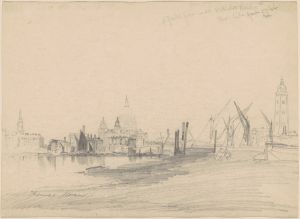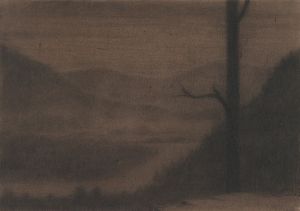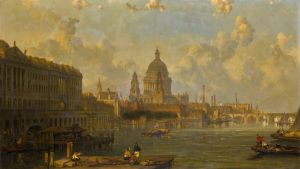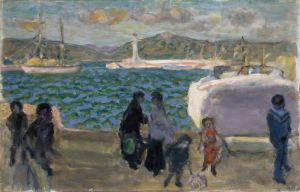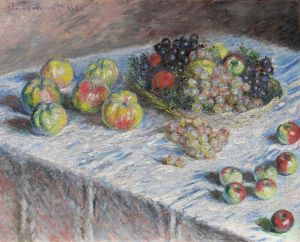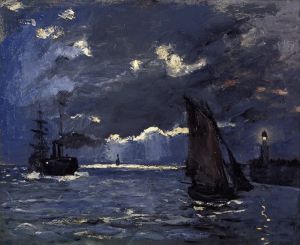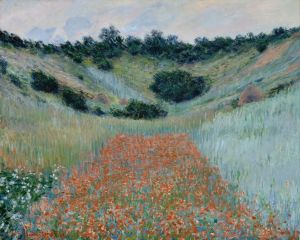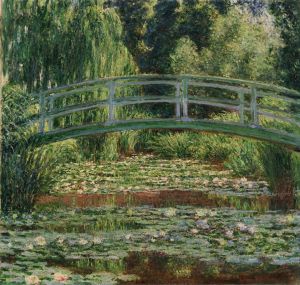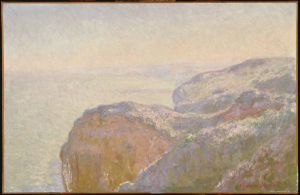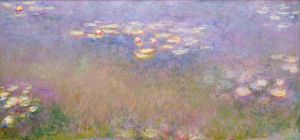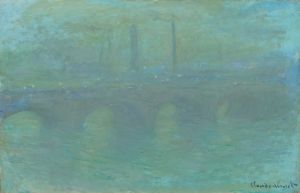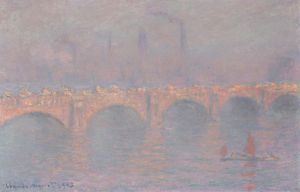
Waterloo Bridge, effet de brouillard
A hand-painted replica of Claude Monet’s masterpiece Waterloo Bridge, effet de brouillard, meticulously crafted by professional artists to capture the true essence of the original. Each piece is created with museum-quality canvas and rare mineral pigments, carefully painted by experienced artists with delicate brushstrokes and rich, layered colors to perfectly recreate the texture of the original artwork. Unlike machine-printed reproductions, this hand-painted version brings the painting to life, infused with the artist’s emotions and skill in every stroke. Whether for personal collection or home decoration, it instantly elevates the artistic atmosphere of any space.
"Waterloo Bridge, effet de brouillard" is an oil painting by the French Impressionist artist Claude Monet. It is part of a series of works that Monet created depicting the Waterloo Bridge in London under various atmospheric and lighting conditions. Painted during the early 20th century, this particular work is notable for its focus on the effects of fog, a recurring theme in Monet's London series.
Monet first visited London in the late 19th century and was captivated by the city's foggy atmosphere, which he found to be an ideal subject for his Impressionist style. Between 1899 and 1901, Monet made several trips to London, staying at the Savoy Hotel, which provided him with a view of the Thames River and its iconic landmarks, including the Waterloo Bridge. From his hotel room, Monet painted numerous studies of the bridge, capturing its appearance at different times of day and under varying weather conditions.
"Waterloo Bridge, effet de brouillard" exemplifies Monet's mastery of light and atmosphere. The painting portrays the bridge shrouded in dense fog, with its structure barely visible through the mist. The muted palette of soft grays, blues, and purples creates a dreamlike quality, while subtle variations in tone suggest the interplay of light filtering through the fog. This work reflects Monet's interest in capturing transient effects of light and weather, a hallmark of his Impressionist approach.
The painting is part of Monet's larger "London Series," which includes depictions of the Waterloo Bridge, Charing Cross Bridge, and the Houses of Parliament. These works were created over several years and were based on sketches and studies Monet made during his time in London. He later completed many of the paintings in his studio in Giverny, France.
"Waterloo Bridge, effet de brouillard" is housed in various collections, as Monet produced multiple versions of the Waterloo Bridge under different conditions. Each version is unique, showcasing Monet's ability to convey the ephemeral beauty of the natural world. The series as a whole is considered a significant achievement in Impressionist art and a testament to Monet's dedication to exploring the effects of light and atmosphere.
This painting, like others in the series, demonstrates Monet's innovative approach to landscape painting and his ability to transform ordinary urban scenes into poetic and evocative works of art.





